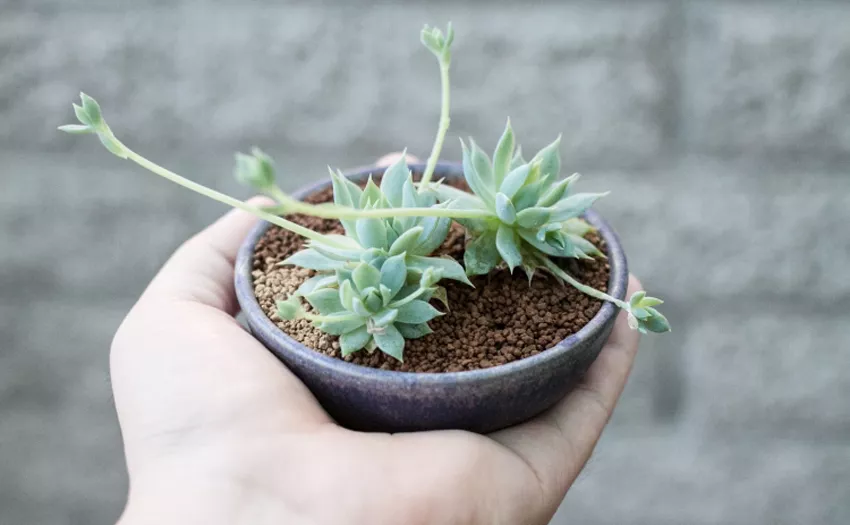Succulents are renowned for their resilience and adaptability, but many enthusiasts believe that these plants require intense sunlight to flourish. Contrary to this common misconception, there are several succulents that can thrive in low-light conditions.
Understanding Low-Light Environments
Before delving into the specific succulents that thrive in low light, it’s essential to understand the characteristics of such environments. Low-light conditions typically refer to areas with reduced sunlight, either due to shading from buildings, trees, or other structures, or when the light is filtered through curtains or sheer windows. In these settings, the intensity and duration of sunlight are limited, posing a challenge for plants that traditionally require ample light for photosynthesis.
Adaptations of Succulents to Low Light
Succulents, known for their water-storing capabilities and resilience in arid conditions, have evolved various adaptations that make them suitable for low-light environments. These adaptations include:
Water Storage: Succulents store water in their leaves, stems, and roots, allowing them to withstand periods of drought. This adaptation enables them to thrive in low-light conditions where evaporation rates may be lower compared to brighter environments.
Reduced Photosynthesis: In low-light settings, succulents may undergo reduced photosynthesis, adjusting their metabolic processes to cope with limited sunlight. This adaptation helps them conserve energy and maintain essential functions despite the lower availability of light.
Efficient Use of Available Light: Some succulents have evolved to efficiently utilize available light by maximizing their surface area. This allows them to capture and make the most of the limited sunlight they receive in low-light environments.
Tolerance to Shade: Certain succulents have developed a higher tolerance for shade, enabling them to thrive under the canopy of larger plants or in areas with filtered light. This shade tolerance makes them well-suited for indoor spaces with limited natural light.
Top Low-Light Succulents for Indoor Gardens
Zamioculcas zamiifolia (ZZ Plant): The ZZ Plant is a popular choice for low-light conditions, making it an excellent option for indoor spaces with limited sunlight. Its glossy, dark green leaves add an elegant touch to any room, and it requires minimal care.
Sansevieria (Snake Plant or Mother-in-Law’s Tongue): Sansevieria is known for its hardiness and ability to thrive in low-light environments. It features upright, sword-like leaves that come in various patterns and colors. Snake plants are also known for their air-purifying qualities.
Epipremnum aureum (Pothos or Devil’s Ivy): While not a traditional succulent, Pothos is well-suited for low-light conditions. Its cascading vines and heart-shaped leaves add a touch of greenery to indoor spaces. Pothos is easy to care for and can tolerate occasional neglect.
Gasteria: Gasteria is a succulent genus that includes species like Gasteria bicolor and Gasteria liliputana. These succulents are well-adapted to low-light conditions and feature attractive rosette-shaped leaves with unique patterns.
Haworthiopsis attenuata (Zebra Plant): The Zebra Plant is a charming succulent with striking zebra-like stripes on its leaves. It is well-suited for low-light environments and can thrive in indoor settings with indirect sunlight.
Epiphyllum (Orchid Cactus): Epiphyllums are epiphytic succulents that naturally grow in the understory of forests, making them adapted to low-light conditions. They produce stunning flowers and are well-suited for hanging baskets.
Sempervivum (Hens and Chicks): While most succulents prefer bright light, Sempervivum can tolerate partial shade and is suitable for outdoor gardens with filtered sunlight. These rosette-forming succulents come in various colors and are cold-hardy.
Peperomia: Peperomia is a diverse genus of small, low-light-tolerant succulents that are popular for indoor cultivation. Their fleshy leaves and unique textures make them a favorite among plant enthusiasts.
Tips for Caring for Low-Light Succulents
While these succulents can thrive in low-light conditions, providing proper care is essential to ensure their well-being. Here are some tips for caring for low-light succulents:
Indirect Sunlight: Even low-light succulents benefit from some indirect sunlight. Place them near a window with filtered light, and avoid exposing them to direct sunlight, which can lead to sunburn.
Watering: Low-light succulents still require well-draining soil to prevent overwatering. Allow the soil to dry out between waterings, and adjust the frequency based on the specific needs of each plant.
Avoid Overwatering: While succulents are adapted to store water, they are susceptible to root rot if overwatered. Ensure that the soil has proper drainage and adjust your watering routine accordingly.
Choose the Right Pot: Select pots with drainage holes to prevent water from accumulating at the bottom. This helps maintain a healthy balance between moisture retention and drainage.
Monitor Temperature: Keep low-light succulents in a temperature range of 60°F to 75°F (15°C to 24°C). Protect them from extreme temperature fluctuations and drafts.
Use a Suitable Soil Mix: Opt for a well-draining soil mix tailored to the needs of succulents. Incorporate materials like perlite, sand, or coconut coir to enhance drainage.
Rotate Plants: Rotate your succulents periodically to ensure even exposure to available light. This helps prevent them from leaning or stretching towards the light source.
Provide Adequate Humidity: Low-light succulents often tolerate higher humidity levels. However, avoid placing them in excessively humid environments, as this can lead to fungal issues.
Conclusion
Cultivating a lush and vibrant indoor garden or shaded outdoor space doesn’t have to be limited by low-light conditions. The diverse array of low-light-tolerant succulents offers a range of options to bring greenery and beauty to spaces with filtered sunlight. Understanding the unique adaptations of these plants, selecting suitable varieties, and providing proper care are key elements in successfully growing succulents in low-light environments. Whether you’re a novice plant enthusiast or an experienced gardener, incorporating these resilient and adaptable succulents into your collection adds a touch of natural elegance to any space, proving that even in the shadows, life can thrive.


